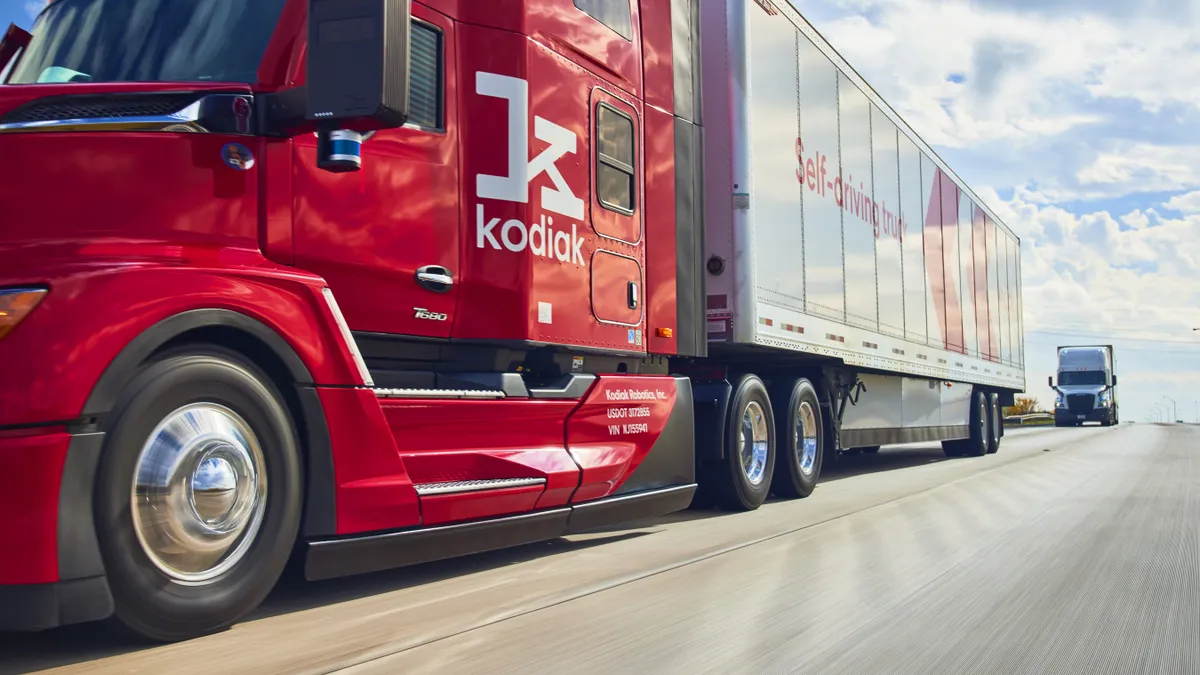"If you build it, they will come" sometimes holds true in the transportation industry. In the case of brake safety monitoring technology, however, that may take a while.
The Commercial Vehicle Safety Alliance’s Brake Safety Week 2020, which kicked off Sunday, serves as a reminder for fleets to focus on the maintenance and monitoring of brake safety. So do the sobering statistics: According to AAA, trucks with a gross vehicle weight rating more than 10,000 pounds were involved in over 400,000 accidents that resulted in more than 4,000 deaths in 2015.
Tools such as automatic emergency braking systems and air disc brakes can improve commercial vehicle safety. Installing automatic emergency braking systems on large trucks could prevent more than 5,000 of crashes each year, and air disc brakes could prevent nearly 2,500 crashes annually, AAA's study found.
Brake monitoring, in particular, is an important piece of the safety puzzle. But high-tech brake monitoring technology — while available — has yet to receive widespread adoption, experts said. Evaluation of brake conditions, for now, remains largely old school.
Safety tech focuses on drivers
Technology available to managers for monitoring brake conditions includes pad-wear and stroke sensors, which can detect wear and tear and alert a driver or fleet manager. Depending on a fleet's preference, the alert can be a light or alarm during the pre-trip inspection, or it could connect to a telematics device and feed data into a portal.
But to some fleet managers, the monitoring technology can amount to a cart before the horse situation, said Brian Marshall, VP of research and development at Haldex Brake Products. "Most of the adoption of safety technology on the commercial side of the business is related to things like stability control and other driver-assist features," he said. "Much of the focus from this area is on driver training and feedback."
"If a manager can’t find an ROI related to an investment, they won’t make it."

Brian Marshall
VP of Research and Development at Haldex Brake Products
For instance, if a truck is equipped with telematics and it captures the fact that a driver is heavily dependent on the stability system, the fleet manager can bring the driver back in for additional training. "There’s more adoption here because it can lead to safety improvements," Marshall said.
Brake pad lining wear indicators, on the other hand, will be more valuable down the road when disk brakes become more readily used. "In this industry, it’s about efficiency and revenue. If a manager can’t find an ROI related to an investment, they won’t make it," Marshall said. "This is good practice because the margins are so low."
Brake monitoring tech: a tough sell on ROI
While the practice of ROI assessment can result in cost savings and wider margin, it also results in an older approach with brakes, said Will Schaefer, director of safety programs at the CVSA. "We’ve always advocated for monitoring the wear of brakes," he said. "But for many fleets, that amounts to getting out a ruler and measuring."
Schaefer offered the example of electronic stroke indicators. Costs can quickly add up when each five axle vehicle requires 10 sensors. "If a company can manually inspect a vehicle on a regular basis and ensure they are staying in adjustment, that’s going to be more affordable. So, the technology is a tough sell," he said.
This is much the approach that Ryder Transportation takes, explained Larry Olson, director of maintenance. The company tracks brake wear and tear during each maintenance check. "We also take data from repairs to analyze and diagnose component failures, which we address with the operator," he said.

Even predictive analysis of brake wear tends to be of the traditional variety. "With regular monitoring, a good service department knows down to the day when brakes are going to need checking, and they schedule these inspections when they anticipate issues to begin showing up," said Schaefer.
When it comes to hoses and tubing — the focus of brake safety week this year — again, most fleets choose a more manual approach to monitoring. "This generally amounts to looking at them for indications that they are in contact with each other or another part of the vehicle," said Schaefer, adding that chafing between parts can rapidly wear down protective layers and lead to an air line rupture. "Inspectors will find these things without needing technology," he said.
Olson said Ryder has developed a set of best practices in this area that it refines and shares with its technicians regularly. "We’re constantly gathering physical inspection results and distribute them internally, and to the component manufacturers if they come up short," he said.
"A good service department knows down to the day when brakes are going to need checking."

Will Schaefer
Director of Safety Programs at the CVSA
For now, fleet managers are largely staying with traditional methods for monitoring brake safety. Looking ahead, however, that may change.
"When you look at the big trends in the industry — electrification of vehicles and autonomous vehicles — more advanced technology will be required to support them," said Marshall. "In the near term, however, fleets will need to see the ability of advanced diagnostics to prove an ROI if they are to receive widespread adoption."




















